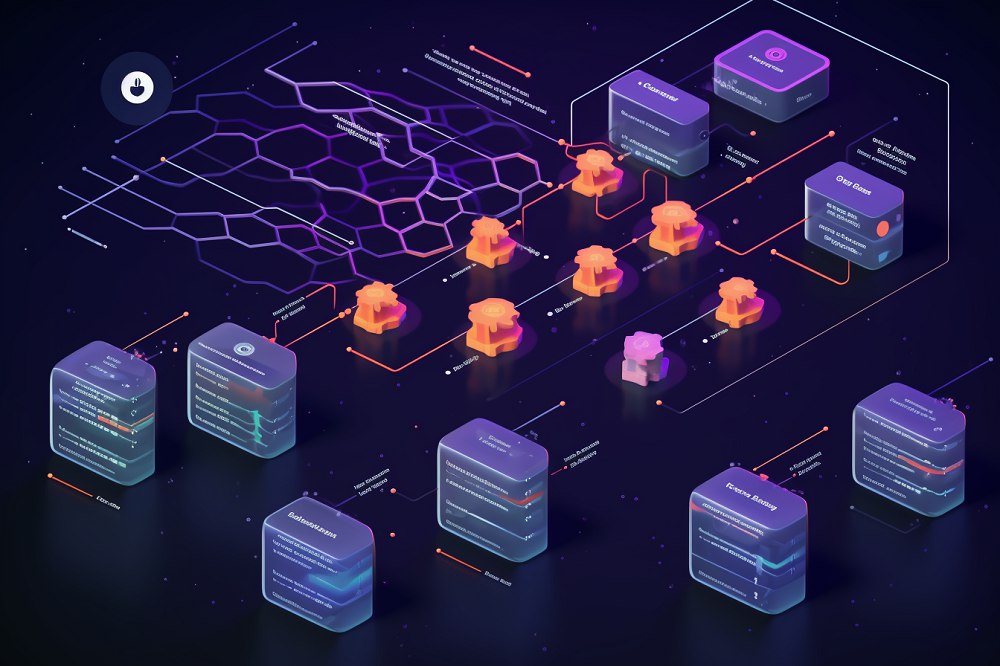In the digital age, where location-based services permeate every aspect of our lives, ensuring accurate, transparent, and secure mapping technologies is paramount. Traditional GPS mapping systems, while ubiquitous, suffer from centralization vulnerabilities, data inaccuracies, and privacy concerns.
However, the emergence of blockchain technology and proof-of-location (PoL) protocols heralds a new era in mapping, promising decentralized, resilient, and privacy-enhanced solutions. This guide explores the transformative potential of blockchain-based mapping and the role of PoL protocols in revolutionizing location verification.
Understanding the Inner Workings of GPS Technology
At its core, GPS works through a network of satellites orbiting the Earth, constantly transmitting signals containing precise timing information and their locations. GPS receivers can accurately triangulate their position by receiving signals from multiple satellites.
The GPS comprises three key segments: space, control, and user. The space segment consists of a constellation of satellites orbiting the Earth, each equipped with atomic clocks for precise timekeeping. These satellites continuously broadcast signals containing their positions and timestamps.
The user segment includes GPS receivers, which are found in a wide range of devices, from smartphones to aircraft navigation systems. GPS receivers capture signals from multiple satellites simultaneously and use the timing information to calculate the distance to each satellite. The receiver accurately determines its three-dimensional position (latitude, longitude, and altitude) by triangulating these distances and the satellites’ known positions.
GPS receivers must simultaneously acquire signals from at least four satellites to ensure accuracy. This allows the receiver to account for errors such as clock drift, atmospheric delays, and satellite orbit deviations. Additionally, advanced GPS receivers use techniques such as differential GPS (DGPS) to further enhance accuracy by correcting for local sources of error.
The Flaws of Centralized GPS Mapping
GPS mapping services like Google Maps, Foursquare, and OpenStreetMap have dominated the navigation landscape for decades. However, their centralized nature exposes them to vulnerabilities such as central points of failure and susceptibility to hacking.
Centralized mapping systems rely on proprietary data stored on centralized servers, leading to data processing and sharing delays. Moreover, these systems compromise user privacy by monetizing geotagged information without consent.
Blockchain Technology in GPS Mapping
Blockchain technology offers a decentralized alternative to traditional GPS mapping, mitigating centralization risks and enhancing transparency, security, and efficiency. By distributing data across a network of nodes, blockchain-based mapping systems eliminate single points of failure and reduce data processing delays. The blockchain’s consensus mechanism ensures data integrity and protects against illegal modifications, enhancing trust in location information.
Proof-of-Location (PoL) Protocols: Ensuring Trust in Location Data
The primary core of blockchain-based mapping is proof-of-location (PoL) protocols, which authenticate the physical position of users within a decentralized network. PoL protocols leverage cryptographic algorithms and consensus mechanisms to verify location data without relying on a single authority. By utilizing a network of trustworthy nodes to collect and validate location data from multiple sources, PoL protocols enhance the accuracy and reliability of location-based transactions and services.
Applications of PoL in Various Industries
The applications of PoL protocols span diverse industries, including supply chain management, asset tracking, decentralized finance, and more. In supply chain management, PoL ensures the authenticity and integrity of goods by verifying their physical location throughout the supply chain journey.
Asset tracking becomes more reliable and transparent with PoL, enabling businesses to monitor the movement of assets in real-time. In decentralized finance (DeFi), PoL facilitates secure and transparent transactions by verifying users’ location when they perform financial activities.
Enhancing User Privacy with Blockchain Mapping
One of the most significant advantages of blockchain-based mapping is its ability to enhance user privacy. Unlike traditional GPS mapping, which requires users to share their location data with centralized authorities, blockchain mapping distributes data across multiple nodes, reducing the risk of unauthorized access and misuse.
Blockchain mapping empowers users to retain control over their location information by eliminating the need for a centralized authority to make unanimous decisions.
Challenges and Limitations of PoL Protocols
Despite their potential benefits, PoL protocols face several challenges and limitations that must be addressed for widespread adoption. One challenge is the reliance on external data sources, which can introduce vulnerabilities for manipulation or spoofing.
Additionally, scalability concerns may arise when confirming location data for many transactions, requiring significant processing resources. Moreover, the varying applicability of PoL across different geographic regions and situations can lead to inconsistent verification accuracy.
Conclusion
As blockchain technology and PoL protocols evolve, numerous opportunities for innovation and advancement in location mapping will open up. Research and development efforts should focus on improving the scalability, accuracy, and interoperability of PoL protocols to address current limitations.
Standardization efforts can also facilitate the integration of geographic locations and coordinates into smart contracts, enabling seamless interoperability across different blockchain platforms. Furthermore, a collaboration between industry stakeholders, researchers, and policymakers can drive the adoption of blockchain-based mapping solutions and ensure their alignment with regulatory requirements and user expectations.
